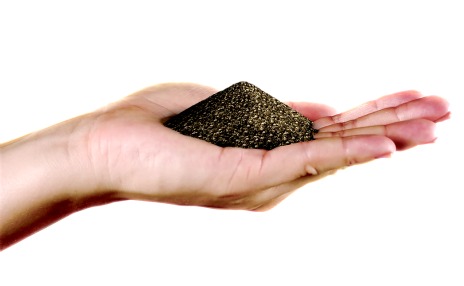
I just used my last garden onion and it’s March! I did a little dance and expressed gratitude to the onion for bringing flavor to our dinner. I have failed at winter preservation in the past. This year, I finally got it right. We have enjoyed onions all winter long without shopping the produce aisle at the grocery store.
Within three weeks, conditions will be favorable for planting potatoes and peas. But I know that my garden soil needs a little TLC before I start digging. Disappointment and wasted money will result if I fail to correctly prepare and amend the garden bed with organic matter and soil nutrients. Last week I blogged about nitrogen in the soil, this week I will address the importance of phosphorus.
Phosphorus is one of the three primary nutrients needed for proper plant growth and development. Phosphorus plays an important role in the following plant processes:
- Photosynthesis – where plants convert sunlight to energy
- Respiration – helps plants breath
- Provides energy transfer and energy storage
- Cell enlargement and cell division
When your favorite onion variety is growing, phosphorous moves from the soil through the roots into the bulb, helping the cells divide and grow. Cell size affects the overall size and weight of your onion (and I like really big onions).
Without the correct amount of phosphorus, critical plant processes do not occur. Soil low in phosphorus will yield plants that are
- weak and stunted
- producing little or no flowers
- have leaves that are bright light green or a purplish color
My garden is full of plants that flower and fruit. To get the harvest I desire, it’s important to amend the soil with phosphorous. The phosphorus available to gardeners comes from phosphate rock. These rocks come from fossil remains from generations of sea life that died and decomposed over long periods of time. It is mined and processed in Florida, North Carolina, Idaho and Utah.
Excess phosphorous does not benefit your plants and can be harmful to the environment. As with nitrogen, farmers and agricultural professionals have implemented different methods to ensure the proper use and application of phosphorus.
As a homeowner and gardener we must follow the lead of farmers and consider our impact on the environment. When amending our soil whether through commercial fertilizers, compost or manure follow the 4Rs.
Right Source – Match fertilizer type to your garden plant needs.
Right Rate – Match nutrients available when plants need them. Do not over apply.
Right Time – Keep nutrients where plants can use them.
Right Place – Match amount of fertilizer to plant needs. Follow label directions





